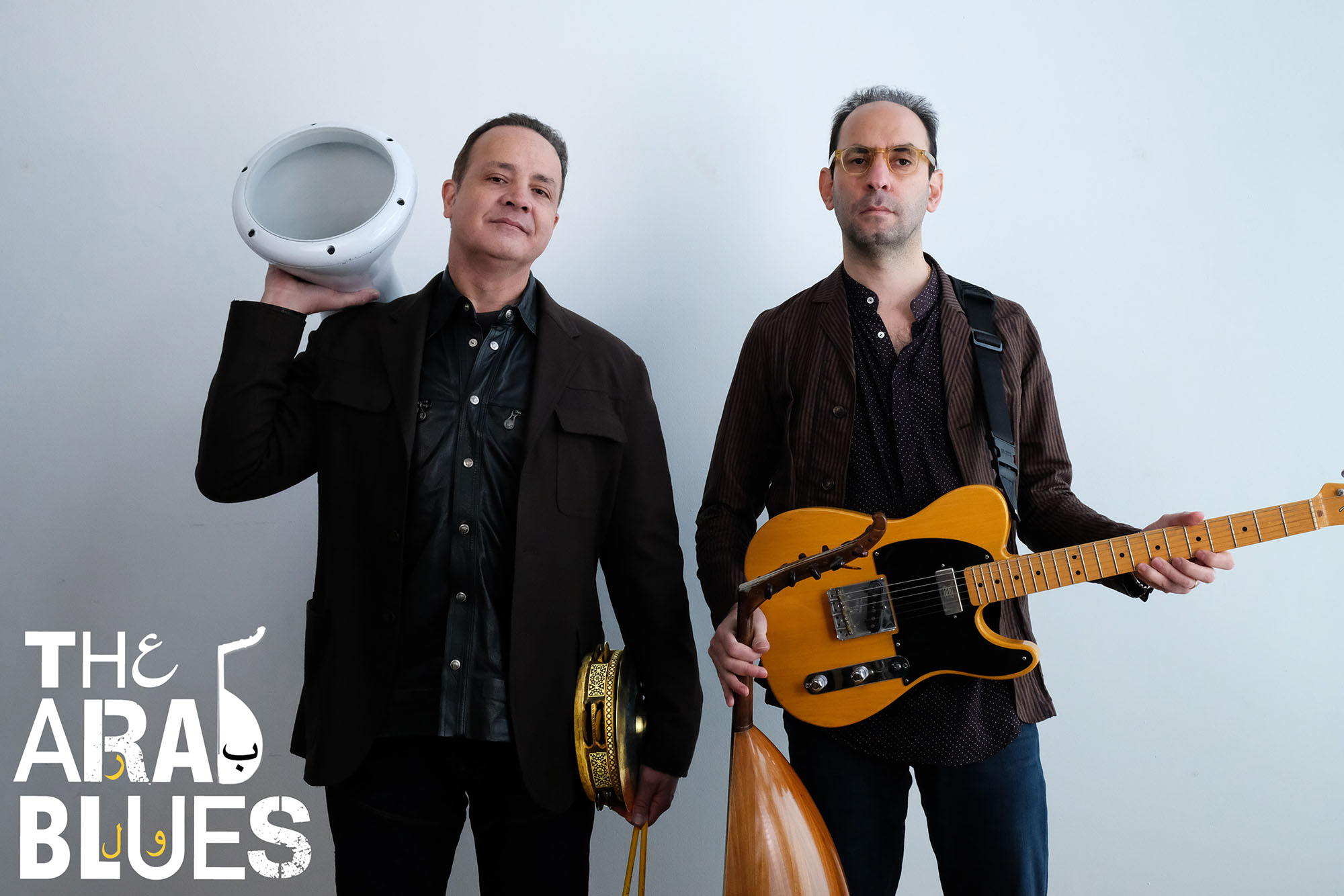At a blues concert, the first thing you notice is not the flashy displays of the performance, but how deeply the audience tends to connect with the music. With their eyes fully closed, attendees absorb every soulful note with intention. Here, music is not just performed, it is felt.
Closing one’s eyes at a blues concert embodies the essence of the blues lifestyle –feeling the depths of human emotion, despite hardships. Amidst all of life’s trials, it is the heart that endures. And it is through this heart, this raw source of emotion, that the blues invites us to experience the world truly.
Karim Nagi and Rami Gabriel, members of the ‘Arab Blues Band,’ see Arabic music as closely connected to the blues. For the Arab diaspora, the blues serves as a means to express deep emotions, particularly those linked to socio-political realities, much like how the African American community originated the blues industry in the 1920s.
The blues has long served as a powerful story for the African American experience. As Martin Luther King Jr., the iconic African American activist, recognized, it looks through the cracks of hardship, describing it as “triumphant music.”
Marrying Arab tradition with Chicago Blues, the Arab Blues Band captures the soul of African American and Arab immigrant experiences, offering a unique portrayal of immigrant artistry.
Immigrant artistry
Immigration is like a collage of fragmented memories; a singular snapshot of a life left behind. No matter how far one travels, these flashes of sounds, sights and stories from home always resurface, as if they keep nudging you to recall the memories, urging you not to forget.
Even after relocating to the United States during elementary school, Karim Nagi, a celebrated musician, dancer, and educator, never strayed far from his Egyptian roots. Through subtle yet meaningful moments of Egyptian life, he still vividly remembers the country’s distinct charm, quirkiness, and authenticity.
Nagi’s most vivid Egyptian memories weren’t extravagant or groundbreaking; they were ordinary sights from car windows and the lingering aroma of old Talat Khamsat (Three Fives) or 555 perfume, often discovered nestled in a corner of our grandmothers’ homes.
“There is a very specific building that I always notice just as the 6 October bridge passes over Mahatit Nasser station. I always notice it because the road seems to bend around the building. This moment remains to this day the moment I feel officially back in Egypt,” Nagi tells Egyptian Streets.
“That, and the smell of 555 perfume.”
While there are countless stories that explore the immigrant experience, the artistic journey through this multicultural experience remains largely unexplored.
Drawn to their surroundings and deeply attuned to human emotions, artists who grow up in multicultural environments find themselves at a unique crossroads. How can they create art that resonates with audiences when their voices bridge two distinct cultures?
For Nagi, this experience drove him to translate his bicultural background into music that defied categorization, reflecting his unique blend of cultural influences and personal memories.
“I was never fully integrated into Egyptian life nor American life. I think it is this experience that facilitated the genre-bending of music,” Nagi shares. “I needed to adapt to this multiculturalism in my way, both in everyday life and in sound.”
For a long time, the concept of belonging remained elusive to Nagi. It was not until he connected with the vast Arab diaspora in America that he finally found a place where he truly felt at home, and began identifying more as an Arab and an Arab-American.
“I felt like I belonged to a large group of people that had diverse interests while retaining a very palpable connectivity to each other through language and shared trials,” he adds. “We were large enough for politicians to cater to us, and we were large enough to have thriving community events. This is when my own identity coalesced.”
Redefining the Arabic sound
At 25, especially after the impact of 9/11 and the unfolding political shifts in the Arab world, Nagi felt a heightened sense of responsibility to showcase his culture and identity to the world.
The paradox of exile is that sometimes, although the edges of cultural memory may soften, the core — the heart — of that culture remains alive. For Nagi, this core was instilled through childhood immersion in the music of Om Kalthoum, Farida al-Atrash, and Sheik Sayyed Darwish, which he described as his “first love,” and the only style of music that continues to inspire him.
Karim Nagi ignited Boston’s fascination with Arabic music through his “Arabesque Mondays” series at Club Passim, an American folk music club at Cambridge, Massachusetts. These monthly events served a dual purpose: drawing in those already interested in traditional Arabic music and educating newcomers to the musical tradition.
Before teaming up with Rami Gabriel to establish the Arab Blues Band, Nagi had been previously exploring his approach to modernizing Arabic music. He would take well-known tunes from non-Arabic traditions and infuse them with Arabic instruments, rhythms, and “Arabizing” elements.
In one album, titled ‘Transport‘, Nagi delves into themes of belonging in the diaspora and expresses his opposition to marginalization. Through his music, he documents the Arab immigrant experience, giving voice to the Arab experience in a new land.
The Arab Blues Band was a natural next step for Nagi’s artistic journey as an immigrant. It mirrored the evolution of his music, which echoed the experiences of African American immigrants and the blues. Like the blues, the Arab Blues Band drew its power from the struggles and stories of a marginalized community.
“By being in the Arabic music groups, and performing for the Arab communities, I felt like I had a role and a cultural function that kept me connected to my heritage,” he adds. “I was also a visible member of the community, and respected, which helped me feel the loyalty.”
The Arab Blues Band blends tradition with innovation. It celebrates the timelessness of classical turath (Arabic music) while absorbing the unique cultural melting pot they are exposed to in the United States.
“I don’t believe anybody has created a hybrid quite like this. I feel that we are making this music because no one else has,” Nagi says.
Arab American audiences also found a powerful connection to the Arab Blues Band’s music. Much like African Americans resonated with the blues, the band’s sound mirrored the frustrations and struggles of Arab Americans in the social and political landscape.
“Many of them do connect with our aggressive delivery, and it seems to echo their social and political feelings. Heavy music is conducive to heavy feelings,” he adds.
In an era dominated by a singular sound in mainstream music, the Arab Blues Band stands out as a breath of fresh air. They defy the trend of homogeneity, prioritizing authenticity over popularity. “The more authentic you are, the more receptive an audience can possibly be,” Nagi says.








Comment (1)
[…] post The Arab Blues Band: Translating the Immigrant Experience into Sound first appeared on Egyptian […]